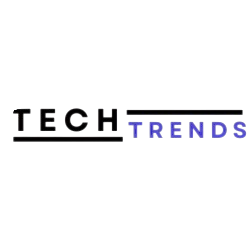Artificial intelligence (AI) has moved beyond theory into practical adoption. Across industries, leaders are rethinking how to optimise operations, enhance decision-making, and unlock new forms of value. Businesses are no longer asking if they should invest in AI, but how fast they can integrate it to drive measurable efficiency and revenue.
AI is more than automation. It represents a fundamental shift in Performance Optimization, giving organisations the ability to make predictive, adaptive, and sustainable choices in real time. Whether in healthcare, manufacturing, tax, transportation, or marketing, the story remains consistent: AI delivers better outcomes with fewer resources.
This guide explores the full landscape—covering technologies, sector-specific applications, leadership insights, challenges, and future trends.
What Does AI in Performance Optimization Really Mean?
AI in performance optimization means leveraging data-driven intelligence to measure, monitor, and improve the way industries function. Unlike legacy automation, which executes pre-set instructions, AI systems learn, adapt, and refine outputs continuously.
Difference from Traditional Automation
Traditional automation = scripted tasks, limited flexibility.
AI-powered optimization = self-learning, predictive, and adaptive.
Key Attributes
Efficiency: faster throughput and minimal resource waste.
Accuracy: higher diagnostic precision, reduced error rates.
Scalability: deployable across global workflows.
Sustainability: optimising energy and resources to cut emissions.
Metrics to Track
Cost savings percentage.
Uptime and downtime ratios.
Customer conversion uplift.
Predictive accuracy levels.
ROI timelines of AI adoption.
Core Technologies Powering AI in Industry
Machine Learning and Deep Learning
Machine learning (ML) and deep learning (DL) models uncover patterns, forecast trends, and automate decision-making. In healthcare, they detect diseases early. In finance, they forecast risks. In logistics, they optimise routes.
Internet of Things (IoT) and Edge Computing
IoT devices collect vast amounts of data from machines, vehicles, and systems. Edge computing ensures decisions are made closer to where data is produced—critical for real-time operations in manufacturing and transportation.
Robotics and Automation Systems
AI-powered robots go beyond repetitive assembly. They handle quality inspections, packaging, and adaptive tasks. Humanoid robots in Mercedes-Benz factories represent how Industry 4.0 blends robotics and human oversight.
Blockchain and Data Security
Transparency is key in sectors like tax and compliance. Blockchain ensures records are tamper-proof and auditable, building trust across stakeholders.
AI in Healthcare: Optimizing Patient Care and Diagnostics
Smarter Diagnostics and Precision Medicine
AI models now rival and sometimes surpass human experts in radiology, oncology, and cardiology. Algorithms can detect cancers or neurological conditions earlier, improving survival rates.
Metrics: diagnostic accuracy rates and earlier intervention success percentages.
Operational Efficiency in Healthcare
Hospitals deploy AI for:
Appointment scheduling and coding.
Insurance verification and claims.
Predictive analytics for public health and outbreak prevention.
Balancing Technology and Human Touch
Leadership must align innovation with empathy. Ethical foresight ensures AI complements human clinicians rather than eroding patient trust. Collaborative teams of clinicians, data scientists, and policymakers represent the future of healthcare design.
AI in Manufacturing and Industrial Automation
Predictive Maintenance and Downtime Reduction
Sensors, ML algorithms, and predictive models detect machine faults before they happen.
Case Study: Amazon’s robotics integration reduced order fulfilment costs by 25%.
Metrics: equipment uptime ratios and maintenance cost reductions.
Quality Control and Defect Detection
AI-powered vision systems catch defects early in the production line, improving quality assurance and lowering recalls.
Robotics in Smart Factories
Mercedes-Benz’s investment in humanoid robots highlights robotics + AI synergy.
Smart factories, powered by IoT and AI, self-optimise workflows—hallmark of Industry 4.0.
Sustainability Through AI
AI reduces waste, energy usage, and emissions. Businesses meeting ESG targets benefit not just from efficiency, but also from regulatory and reputational gains.
AI in Transportation: Driving Efficiency and Safety
Autonomous Vehicles and Fleet Management
Entities like Tesla, Waymo, and Uber push self-driving innovation.
Metrics: fewer accidents, reduced CO₂ emissions, and faster delivery times.
Logistics and Supply Chain Optimization
AI analyses traffic, weather, and demand forecasts to redesign logistics systems. Predictive analytics enhances global transport reliability while lowering costs.
Challenges for Leaders
Transport executives must address regulatory hurdles, public trust, and environmental sustainability simultaneously.
AI in Tax and Accounting: From Compliance to Strategy
Automation of Repetitive Processes
AI automates reconciliation, data entry, and filing, freeing tax professionals for strategic value work.
Strategic Role of Tax Professionals
Advanced analytics help forecast liabilities, evaluate risk, and align taxation with growth.
Quotes from leaders like Rema Serafi (KPMG US) and Charles T. Almond III (TaxClosure) stress the new hybrid role of financial expertise and technological adoption.
Blockchain in Compliance
Tax and accounting adopt blockchain to ensure transparency, prevent fraud, and build trust across stakeholders.
AI in Marketing and Customer Experience (Missed by Competitors)
Personalisation at Scale
AI engines tailor campaigns across channels.
Metrics: uplift in conversions, retention, and customer engagement rates.
Predictive Customer Insights
Models forecast churn, upsell potential, and customer lifetime value.
Integration Across Channels
Omnichannel AI solutions align email, mobile, social, and web, creating seamless journeys.
This is an area many competitors fail to emphasise, leaving a strong SEO opportunity.
Cross-Industry Comparison: Where AI Delivers the Most ROI
| Industry | Key Application | Impact (Metrics) | Adoption Challenge |
|---|---|---|---|
| Healthcare | Diagnostics & admin automation | Higher accuracy, reduced wait | Ethics, regulation, trust |
| Manufacturing | Predictive maintenance & QC | Downtime ↓, costs ↓ | Data quality, upfront cost |
| Transportation | Autonomous fleets, logistics | Accidents ↓, emissions ↓ | Regulatory approval, safety |
| Tax & Accounting | Compliance automation | Time saved, strategy ↑ | Blockchain adoption, reskilling |
| Marketing | Customer personalisation | Conversion ↑, churn ↓ | Privacy, bias in algorithms |
Leadership in the AI Era: How to Drive Change Without Chaos
Adaptability: Leaders must steer through regulatory shifts.
Foresight: Anticipating disruption before it arrives.
Culture of Innovation: Encouraging experimentation without fear of failure.
PwC’s 2024 survey found that 45% of employees experienced workload increases, often due to poor AI integration. Leaders must adopt AI thoughtfully to avoid burnout.
Challenges Businesses Must Address Before Scaling AI
High Initial Investment: Balancing ROI timelines.
Data Quality and Governance: Clean data fuels AI accuracy.
Cybersecurity and Privacy: Encryption, audits, and compliance remain central.
Cultural Resistance: Reskilling workers for AI collaboration.
Future Trends Shaping AI Performance Optimization
Rise of Industry 4.0 and Smart Factories
Factories integrate IoT, big data, and AI into fully autonomous, interconnected ecosystems.
Digital Twins for Simulation and Optimisation
AI creates digital replicas of systems for predictive scenario testing.
Sustainable AI Adoption
AI aligns with environmental goals—reducing waste, emissions, and energy demand.
Human-AI Collaboration Models
Future work blends AI intelligence with human creativity, creating adaptive organisations.
FAQs About AI and Performance Optimization
Which industries benefit most from AI performance optimization? Healthcare, manufacturing, and transportation currently lead adoption.
How does AI reduce costs in manufacturing and logistics? Through predictive maintenance, routing optimisation, and robotics.
What role does AI play in healthcare diagnostics? Early, accurate detection of diseases and improved treatment outcomes.
What leadership qualities are critical for AI adoption? Vision, adaptability, ethical responsibility, and innovation culture.
Is AI replacing jobs or reshaping them? AI is shifting jobs toward supervisory and analytical roles, requiring reskilling.
Why Tech Trends is the Best SEO Agency for AI and Performance Optimization Content
Integrating AI into operations is one thing. Translating AI adoption into search visibility and digital growth is another. That’s where Tech Trends excels.
Our agency combines:
Deep SEO strategy: Semantic keyword targeting like AI in performance optimization, automation trends, and smart factories.
Content excellence: Long-form guides, schema FAQs, and entity-based optimisation.
Competitive edge: Identifying gaps competitors miss, such as AI in marketing and cross-industry ROI comparisons.
If your organisation is implementing AI and wants to lead thought leadership in search rankings, Tech Trends is your partner of choice.
Conclusion
AI has shifted from experimental to essential. From healthcare diagnostics to industrial robotics, transportation systems to marketing personalisation, the promise of Performance Optimization through AI is tangible and measurable.
The leaders who act with vision, ethical foresight, and cultural alignment will not only survive disruption but thrive. For businesses aiming to translate adoption into competitive advantage, the mandate is clear: embrace AI strategically and communicate it effectively through SEO-driven content.
That’s exactly what Tech Trends helps clients achieve.





